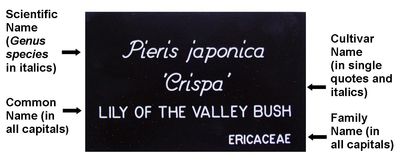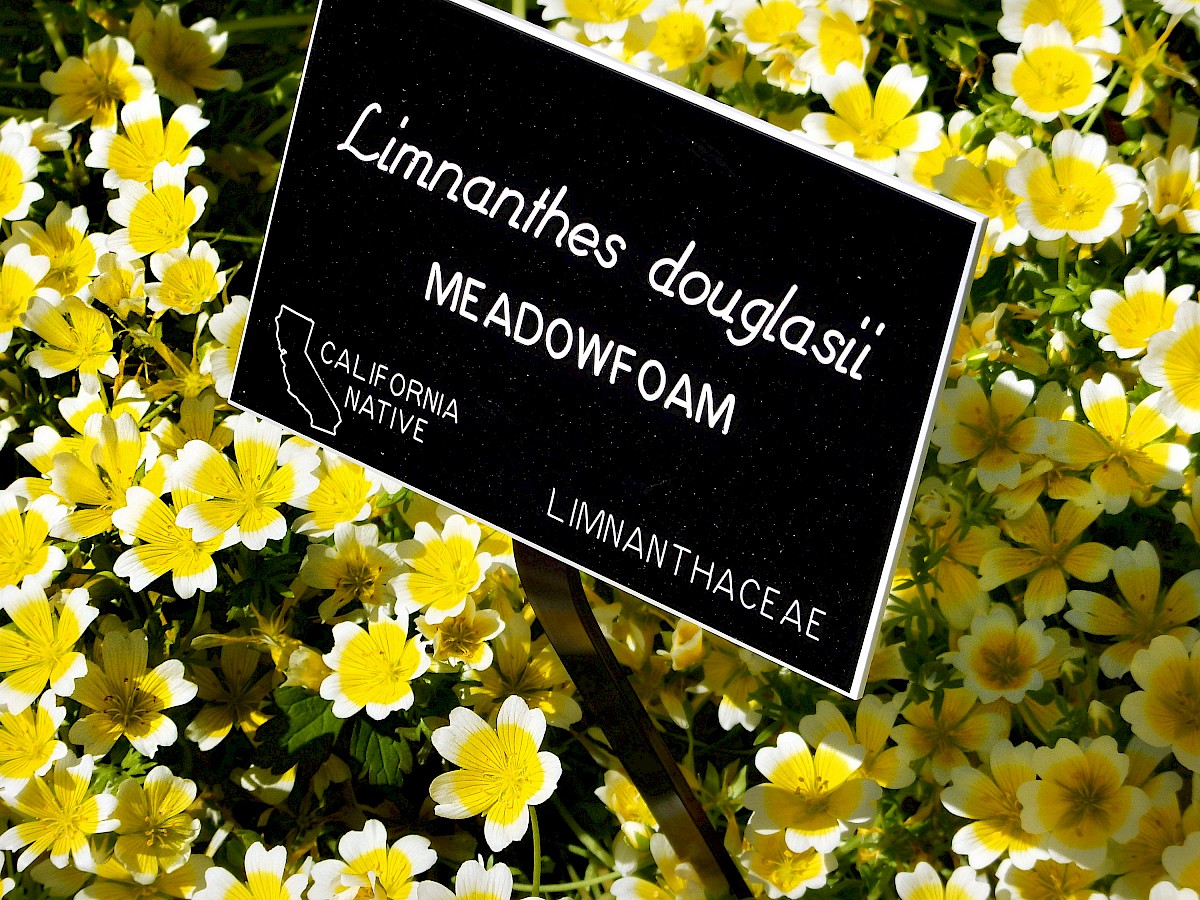How to read our plant labels
An educational experience
Botanical gardens are considered "living museums," and as such their plant collections need to be correctly identified and documented to serve our goals of display, education, and conservation. Part of this process at Mendocino Coast Botanical Gardens is creating display labels for plants in the Gardens.
Display labels
We use two sizes of bi-layer, black plastic labels- a small label that is used for perennials and small shrubs, and a larger label that is used for larger shrubs and trees. The information on each label is dictated in part by label size, but also by the type of information we wish to provide to the public.
In general, each label contains the following:
- Scientific name (which includes the genus, species, and any sub-species or variety names), written in italics
- Cultivar Name (cultivars are named varieties selected or bred for a desired trait) written with single quotes and italics
- Common name (which may vary from place to place), written in all capitals

The larger labels also contain:
- Plant family name (due to size the smaller labels do not contain plant family information), written in all capitals
- if it’s a California native, a small California logo with the word Native

For a variety of reasons, not every plant in the Gardens has a display label; it may be a new planting awaiting a label, a duplicate planting of another labeled plant nearby, or it may be unidentified. Horticulturists work together to develop labels as needed, balancing our visitor’s desire for information and the aesthetics of the Gardens.
Accession tags
Another label that you may see on some plants in the Gardens is a brown, anodized metal, accession tag. As plants are added to our database they are assigned an accession number and qualifier, e.g., 1999069*A, with the first four digits of the number reflecting the year it was accessioned, the next three the sequence of its entry, and the qualifier symbolizing how many plants are part of that specific accession. These tags are used extensively on shrubs and trees in the Gardens; accession tags are not used on most herbaceous perennials due to their ephemeral nature and the fluidity of the plantings. They are located close to the plant so they are less visible.
Each accession tag contains the following information:
- accession number and qualifier
- scientific name
- plant family name
Accession tags allow our Horticulturists to track specimens in the ground and record information in the database. At Mendocino Coast Botanical Gardens we have maintained a computerized plant records database since the late 1990’s. Beginning in 1999 our plant records were transferred into BG-BASE™, a plant collections management software system used by over 186 institutions in 30 countries, which enables us to track a variety of information about our plants.
Next: Camellia Collection »


